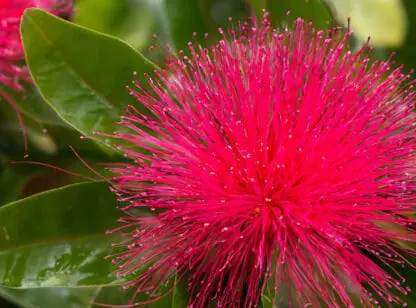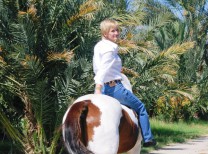In this series on the medicinal value of local vegetation, I have discussed Fouquieria splendens (Ocotillo) and Larrea tridentata (Creosote bush). Now, we’ll look at Bougainvillea, one of the most decorative plants in the area.
Unlike the previous two plants, Bougainvillea is not native to the desert. This shrubby vine comes from South America and its beauty has spread among tropical and warm climate regions of the world. Botanically, people awe over their abundant, almost continual, vibrant foliage. Fun fact: It is not their flowers that are colorful, but petaloid bracts, a type of modified leaf which can appear in red, magenta, orange, pink, rose, white and mauve. Their flowers are actually very small and white-cream-yellowish in color. The bracts can be round or more triangular in shape and will stay colorful for several months after the flowers are finished. Over time, the vibrancy of the color fades and the bracts texture start to resemble that of paper, hence its common name, Paper Flower.1
This plant has natural botanical insecticide properties. However, regular pruning not only provides the ability to shape the plant and direct its growth, it also can prevent overcrowding that can lead to pests and diseases. In fact, the trunks can be braided, and shoots trained into various shapes. Care should be taken whenever handling this plant as it has very impressive thorns, which also make it a great security fence!
Historical medicinal uses of Bougainvillea include antibacterial and antiviral activities used as treatment for coughs and respiratory issues.2 Highlights of modern research suggest properties that fight cancer, diabetes, high cholesterol, liver toxicity, inflammation, oxidation, ulcers and microbes to name a few.3 A study on its anti-inflammatory effects showed comparable effectiveness in an oral dose-dependent manner to positive controls of indomethacin, aspirin and dexamethasone.4
What is even more notable is it has been used among tribal people of many countries as a form of birth control – for both women and men. A Pharmacognosy Review article stated studies that support its antifertility properties. For males, it reduces sperm count, impairs sperm viability and motility, and potentially increases the negative charge on the sperm surface, thereby inhibiting its capacity of fertilization. Other histological changes of male reproductive organs are noted as well. For women, it disrupts various phases of the menstrual cycle. For both males and females, testosterone and estrogen levels were significantly decreased.3 In a world where the burden of birth control has been placed almost exclusively on females, this may provide an avenue for future generations to share that burden more evenly.
Again, it is my hope that these articles give you pause, and next time you see the Bougainvillea, appreciate not only the beauty of its bracts, but also the many medicinal benefits that nature provides us.
Dr. Shari Jainuddin is a naturopathic primary care doctor at One Life Naturopathic and also offers biofeedback training and craniosacral therapy. This article is intended to be informative and is not provided as medical advice. For more information, call (442) 256.5963 or visit www.onelifenaturopathic.org.
References available upon request.















































Comments (0)